On and in the mound of Nimrud
The archaeological site of Nimrud has been the subject of investigation since the 1840s — a similar length of time to its heyday as Assyria's most important royal city. In the 19th century Nimrud was particularly associated with the British Museum, in the 20th with the British School of Archaeology in Iraq, now the British Institute for the Study of Iraq TT . Teams from Poland, Italy, and Iraq have also worked on the site, as well as unaffiliated individuals, whether thieves or explorers. This section considers the changing images of the ancient city of Kalhu produced by successive generations of researchers.
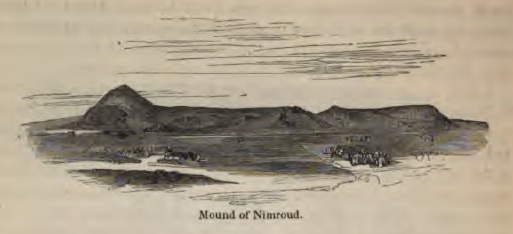
Image 1: View of Nimrud in 1850 (1)
It is a truism that our knowledge of the past is determined by archaeological happenstance. But we more rarely focus on the socio-political factors that shape archaeological decision-making. As this section shows, it matters where archaeologists choose to dig: which sites they pick, which parts of the site they open up. But what they find is not the end of it. How they choose to interpret it is largely based on geographical and chronological factors beyond their control as well.
So this section takes four pairs of snapshots of Kalhu, from Nimrud and London each 50 years apart, to try and recreate past views of the city. Explorers and academics from a different time, a different place, might have chosen to focus on different aspects of the site of Nimrud: its post-Assyrian occupation, its earliest settlement, life in the lower town, for instance. And they would have revealed a very different Kalhu than the one we think we know today.
For a long time Kalhu, or rather Calah, existed only in the pages of the Biblical Old Testament. The Book of Genesis mentions Calah twice, as "a great city" near Nineveh PGP , but says no more about it (Gen 10.11-12). That meant there was little to stimulate the imagination of readers, while for local people the place itself was just an irregularly shaped hill surrounded by farmland, near the modern village of Nimrud (Image 1). This story begins, then, in 1850, just a few years after work began on the ancient site.
Kalhu in 1850
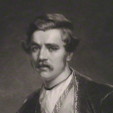
By 1850, the young British explorer Austen Henry Layard PGP had been tunnelling into the site of Nimrud, on and off, for the past five years. He had found a spectacular series of sculptures and other objects, and shipped them home to the British Museum TT . He had mapped the rooms of a series of palaces, which seemed to belong to the fabled Old Testament city of Nineveh PGP . Back in London, his lively writings and illustrations had captured the imaginations of the Christian establishment and the men of empire alike. It was now time to leave Nimrud behind for a new career in diplomacy - but the names of Layard and Nimrud would remain inseparable for a long, long time to come.
Kalhu in 1900
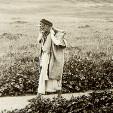
If in 1850 ancient Kalhu was not yet clearly visible from the modern site of Nimrud, by 1900 Nimrud itself had lost all geographical reality in the English speaking world. There could be no view of Kalhu from Nimrud because there was no-one on site, and no-one of any academic authority had set foot there for decades. And for the new generation of university-based Assyriologists TT , the heroic story of Layard's adventures still overshadowed attempts to understand the ancient city.
Kalhu in 1950
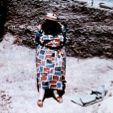
By 1950, at last, serious investigations were underway to reveal the geography and history of the ancient city of Kalhu. Under the direction of Max Mallowan PGP the archaeological site of Nimrud was active again, for the first time in about a hundred years. Much had changed in attitudes and approaches over the past century but much had stayed surprisingly the same.
Kalhu in 2000
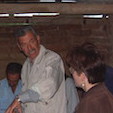
Around the year 2000, ancient Kalhu was much more visible than it had ever been before, while the site of Nimrud had never been less accessible. The second half of the twentieth century had brought dramatic changes in the ways ancient Kalhu was studied and viewed. Work on site was forced to a halt by war in 1990 TT , but this enabled a period of re-analysis and synthesis of earlier work. At the turn of the new millennium, a decade of far-reaching UN sanctions TT on Iraq seemed to be coming to an end, encouraging archaeologists to travel to and from Iraq, and new international working relationships to be forged.
Kalhu in 2015
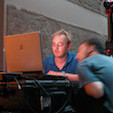
Right now, in the summer of 2015, the name of Nimrud is better known globally than at any time before. Yet the site itself is under jihadi occupation TT and the Northwest Palace has been destroyed. Archaeologists, museum staff and university academics in Mosul PGP have been forced from their jobs, and many have fled to safer places. Only when Daʾesh/ISIS has been expelled from northern Iraq will it be possible to truly assess its current state. Meanwhile new computer-based techniques can help to the prepare for restoration TT and a new phase of research.
Timeline of excavations
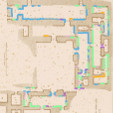
For a more conventional overview of the site's history, this page gives a brief summary of archaeological work carried out at Nimrud over the past two centuries.
This section of the website is based on Eleanor Robson's talk A Tale of Two Cities [/nimrud/images/tale-of-two-cities-poster.jpg] given at UC Berkeley in September 2014.
18 Dec 2019References
- Layard, A.H., 1853. Discoveries in the Ruins of Nineveh and Babylon, London: John Murray (free online edition via The Internet Archive), p. 80. (Find in text ^)
Eleanor Robson
Eleanor Robson, 'On and in the mound of Nimrud', Nimrud: Materialities of Assyrian Knowledge Production, The Nimrud Project at Oracc.org, 2019 [http://oracc.museum.upenn.edu/nimrud/modernnimrud/onthemound/]